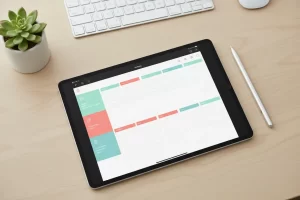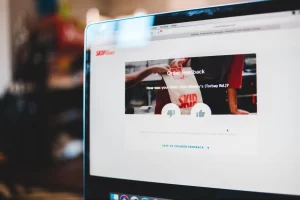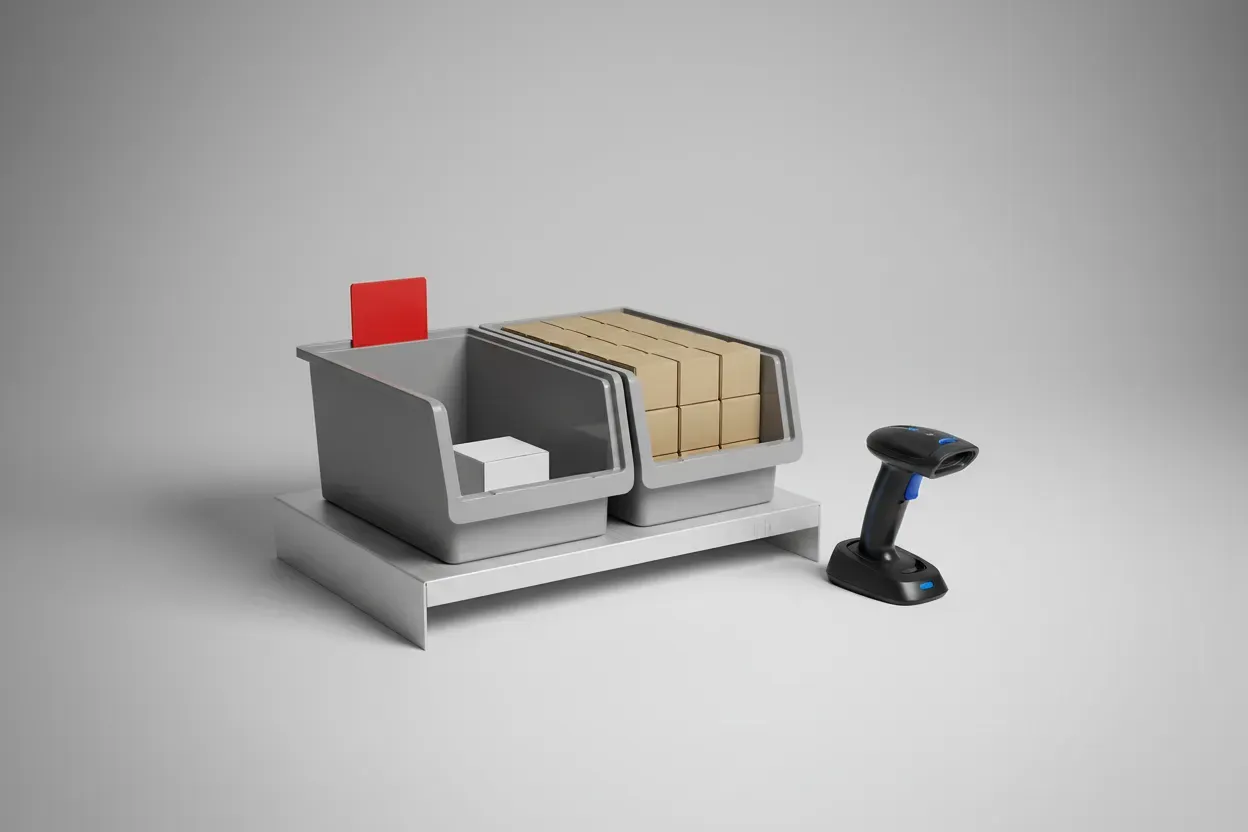12 Strategies from Business Leaders on Creating an Inclusive Workplace
Discover effective strategies for fostering an inclusive workplace, backed by insights from seasoned business leaders. This article presents practical approaches that can transform your organization’s culture and enhance employee engagement. Learn how small changes in leadership practices and company initiatives can create a more welcoming and productive environment for all team members.
- Create Intentional Spaces for Every Voice
- Host Monthly Culture Lunches
- Implement Rotating Design Spotlight Program
- Foster Culture of Deep, Active Understanding
- Launch Structured Mentorship Initiative
- Know Employees Personally
- Recognize Contributions Through Thoughtful Gestures
- Organize Quarterly Perspective Exchange Workshops
- Demonstrate Inclusivity Through Leadership Actions
- Establish Proactive Inclusion Feedback Loops
- Host Connection-Focused Quarterly Social Events
- Recruit Globally, Embrace Remote Work
Create Intentional Spaces for Every Voice
One strategy I’ve found incredibly effective in fostering a positive and inclusive workplace culture at Zapiy.com is creating intentional spaces for every team member’s voice to be heard–regardless of role, background, or tenure. It sounds simple, but genuine inclusion begins with listening.
From early on, we implemented structured “culture check-ins” as part of our all-hands meetings and smaller team huddles. These aren’t status updates–they’re open forums where employees can share experiences, raise concerns, suggest improvements, or spotlight something they’re proud of. We make a point to rotate who leads these sessions so that leadership isn’t the only voice guiding the conversation. This has helped us uncover blind spots, strengthen empathy across teams, and keep us accountable to the culture we’re building.
A specific example of how we promote DEI within the organization is through our mentorship initiative. We recognized early that while our hiring was diverse, equitable growth opportunities weren’t always as visible for everyone. So, we launched an internal mentorship program that pairs junior team members–particularly those from underrepresented backgrounds–with senior leaders across departments. These relationships are structured, goal-oriented, and designed to elevate voices that might otherwise be overlooked in a fast-paced environment.
What’s been powerful is seeing these mentorships not just help individuals grow, but also shift the perspective of leadership. It’s one thing to set diversity goals–it’s another to invest time in really understanding what support looks like in action. We’ve seen mentees transition into leadership roles, take on stretch projects, and influence company-wide initiatives based on their lived experiences.
To me, inclusion isn’t a one-time training or a checkbox–it’s a consistent, evolving practice. The most valuable culture is one that’s co-created, and at Zapiy.com, we’re committed to making sure everyone on the team feels like they have a seat at that table.
Host Monthly Culture Lunches
As a business owner, creating a positive and inclusive workplace culture is one of my top priorities. I make it a point to foster open communication, celebrate diverse perspectives, and ensure every team member feels valued and heard. One specific way I promote inclusion is by hosting monthly “culture lunches,” where employees can share a meal and a bit about their background, traditions, or even favorite family recipes—it’s a great way for the team to connect beyond work. We also regularly review our policies and practices to make sure they support equity and accessibility for everyone. When people feel respected and included, they do their best work—and that’s what drives our success.
 Evan McCarthy
Evan McCarthy
President and CEO, SportingSmiles
Implement Rotating Design Spotlight Program
We implemented a rotating “design spotlight” program where team members from all positions–from warehouse staff to salespeople–can showcase home design elements they find inspiring, regardless of price point. This has transformed our culture by validating that good design exists at every budget and giving everyone a voice in trend discussions. One of our warehouse staffers recently highlighted an innovative vinyl flooring pattern he spotted in a fast-food restaurant, which led us to source a similar option that became popular with budget-conscious clients. This inclusive approach ensures everyone feels their design eye is valued, regardless of their role.
 Dan Grigin
Dan Grigin
Founder & General Manager, Elephant Floors
Foster Culture of Deep, Active Understanding
Creating a genuinely positive and inclusive workplace culture is fundamental for any organization aiming to thrive. It’s not just about policies; it’s about weaving principles of respect and empathy into the daily fabric of working together. One powerful strategy centers on fostering a culture of deep, active understanding. This culture means moving beyond surface-level interactions to genuinely appreciate the unique backgrounds, perspectives, and challenges each team member brings. When prioritizing understanding, we build trust and psychological safety, empowering individuals to bring their whole selves to work, contribute fully, and feel a genuine sense of belonging. This commitment to understanding fuels collaboration and ultimately drives the collective success of our shared mission.
This approach requires more than passive agreement; it demands active listening and intentional effort to see situations from others’ viewpoints. It involves creating spaces where open dialogue is encouraged, and different opinions aren’t just tolerated but actively sought out as valuable assets. By cultivating empathy, we break down silos and build stronger interpersonal connections. Teams become more cohesive, innovative, and resilient because they can leverage a broader range of ideas and experiences. Investing in developing these relational skills across the organization ensures that inclusivity isn’t just a goal but a lived reality, reflected in how colleagues support each other, resolve conflicts, and celebrate successes together. It’s about recognizing that our collective strength lies in our diversity of thought and experience.
We promote diversity, equity, and inclusion through this lens by embedding the practice of seeking diverse perspectives into our core processes, especially in problem-solving and project design. Before finalizing a significant decision or plan, we intentionally gather input from a cross-section of employees representing different roles, backgrounds, tenure, and ways of thinking. This collection isn’t just a feedback exercise; it’s a collaborative session where we actively explore how different viewpoints can shape a more robust and equitable outcome. For instance, when developing a new internal process, we ensure voices from various departments and levels contribute to the design, specifically asking how the proposed changes might impact different groups uniquely.
 Steve Fleurant
Steve Fleurant
CEO, Clair Services
Launch Structured Mentorship Initiative
Working as a recruiter gives me first-hand insight into the types of DEI initiatives that truly resonate with the diverse candidates we place. Drawing from those insights, we launched a structured mentorship initiative at Spencer James Group that pairs newer team members with experienced recruiters or company leaders who can actively advocate for their growth and visibility.
This program has been an effective way to promote inclusion and equity across our team. It builds strong cross-level relationships and helps ensure that career development opportunities are distributed more equitably, so no one is overlooked. What’s more, we found an unexpected benefit: having a direct connection to leadership empowered junior team members to share their ideas more freely. They gained an indirect voice in decision-making and strategic planning by passing feedback through their mentors.
Since launching the initiative, we’ve seen stronger retention among early-career employees across demographics and a more cohesive, supportive work environment overall. In our pulse surveys, team members consistently report feeling valued and supported, which is exactly the kind of culture we strive to build.
 Steve Faulkner
Steve Faulkner
Founder & Chief Recruiter, Spencer James Group
Know Employees Personally
This one feels a little hokey, but it’s worked well for me as the founder of multiple businesses. I put effort into knowing my employees; their names, their birthdays, their families, their likes and dislikes. I actually keep notes on these things, and review them before interacting with anyone I work with. Simply knowing that the boss knows who they are and cares about them as people goes a long way to not only showing those workers that I want them here, but showing everyone else that this is the expectation as well.
 Jonathan Palley
Jonathan Palley
CEO, QR Codes Unlimited
Recognize Contributions Through Thoughtful Gestures
One strategy we consistently rely on to create a positive and inclusive workplace culture is to ensure that every individual feels seen and valued, not just for what they do, but for who they are. This starts with intentional listening and consistent, quiet leadership. It’s easy to set policies and draft statements, but the real work happens in everyday interactions – in meetings, in the way feedback is given, and in how we make space for voices that are often overlooked.
Part of fostering that environment also means recognizing contributions in meaningful ways. Employee gifting, when done thoughtfully, can play a quiet but powerful role in expressing professional gratitude. It’s not about the price tag; it’s about acknowledging effort, celebrating individuality, and reinforcing that everyone belongs. I’ve often paired small, personalized gestures with moments of recognition, such as a culturally relevant gift basket, particularly during milestones that matter. These aren’t grand gestures, but over time they build a fabric of respect, care, and inclusivity that defines a healthy workplace culture.
 Dmitriy Peregudov
Dmitriy Peregudov
CEO & Founder, Giftsenda
Organize Quarterly Perspective Exchange Workshops
At Fulfill.com, we’ve implemented a “Partner Diversity Acceleration Program” that both creates an inclusive workplace internally and extends our values throughout our network.
One specific initiative I’m particularly proud of is our quarterly “Perspective Exchange” workshops. These structured sessions bring together team members from different backgrounds, departments, and experience levels to collaborate on solving real business challenges.
For example, last year we were facing friction in our matching algorithm that wasn’t adequately serving certain geographic regions. Rather than having just our tech team address it, we assembled a diverse working group including team members from customer success, operations, and even partners from underrepresented regions. The results were remarkable – not only did we improve our matching success rate by 23%, but we also discovered several cultural nuances in warehousing practices we hadn’t previously considered.
This approach accomplishes two critical objectives: it brings diverse perspectives to our operational challenges while simultaneously creating an environment where everyone experiences how different viewpoints lead to superior outcomes. The workshops have become a cornerstone of our culture, with 92% of participants reporting they feel more valued and included afterward.
We’ve extended this mindset to our 3PL network as well, actively seeking and supporting diversity-owned fulfillment partners like DFS (Diversified Fulfillment Solutions). By highlighting and celebrating these partners, we’re helping create more equitable opportunities across the fulfillment ecosystem.
I firmly believe that in the logistics world, where we’re constantly optimizing complex systems, diversity of thought isn’t just a moral imperative – it’s a competitive advantage. By embedding inclusion into how we solve problems rather than treating it as a separate initiative, we’ve created a culture where diversity naturally thrives and directly contributes to our success.
 Joe Spisak
Joe Spisak
CEO, Fulfill.com
Demonstrate Inclusivity Through Leadership Actions
Leadership involvement is crucial. Leaders should actively demonstrate inclusivity through their own actions and policies, setting clear examples for everyone else to follow. At Comligo, our leaders regularly discuss diversity and inclusivity openly, acknowledging that every team member experiences situations differently. One effective practice is regularly gathering team feedback about their workplace experiences. This helps leadership understand diverse perspectives and adjust practices to ensure fairness and inclusivity for everyone.
 Joaquin Calvo
Joaquin Calvo
Director, Comligo Spanish
Establish Proactive Inclusion Feedback Loops
The simplest, yet most effective strategy I find is communication. Not just communicating, but over-communicating and troubleshooting. This manifests in our organization through proactive, frequent, and structured “Inclusion Feedback Loops.”
We established these loops as a direct response to a period where we noticed a disconnect between stated DEI initiatives and the lived experiences of some employees. We found that simply having policies wasn’t enough; we needed constant, active dialogue. Over-communication and real-time troubleshooting are powerful tools for creating an inclusive workplace.
It’s about creating a dynamic, responsive environment where feedback is not just collected, but acted upon.
 Alexandru Samoila
Alexandru Samoila
Head of Operations, Connect Vending
Host Connection-Focused Quarterly Social Events
One strategy we use to foster a positive, inclusive workplace is hosting quarterly social events that prioritize connection over productivity. These gatherings—both in-person and virtual—create space for our team to engage authentically. For remote staff, we partner with a company that organizes themed online trivia nights and sends curated gift boxes in advance. It’s a simple but effective way to build camaraderie and ensure every team member feels seen and included, regardless of location.
 Scott Clyburn
Scott Clyburn
Founder and Director, North Avenue Education
Recruit Globally, Embrace Remote Work
Inequality and marginalization are key issues faced in the workplace today. They exist not just on a local level but also an international one.
We recruit candidates from anywhere in the world, and 100% of our team works from home and always has done. This allows those marginalized by social norms or by state-sanctioned inequality to overcome those barriers. It also means people with disabilities who might struggle to reach an office can instead work in comfort from their own homes.
We provide web design and multilingual SEO services. It would be unrealistic to think that the best candidate will live just around the corner from us. Factors like race, gender, and sexuality have absolutely nothing to do with how well someone performs in their job. By accepting international applicants, not only do we increase our diversity, equity, and inclusion, but we also hire the best candidate for the role.
Creating a positive workplace culture doesn’t end with recruitment. We offer our team flexible schedules, allowing them to take a mental health day or collect children from school. We also encourage upward feedback, ensuring that no matter how junior someone is, they feel they have a voice. Finally, we have a strict ethical policy and turn down work from any companies that promote racism, sexism, hatred, or intolerance.
By attracting the best candidates internationally and ensuring a policy of acceptance, you will create a diverse culture, and your business will thrive.
 Allison Carmichael
Allison Carmichael
Co-Founder & Art Director, Indigoextra Ltd








































